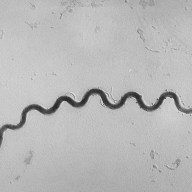Phosphorus ban will help protect waterways
Recent plans to ban phosphorus from all detergents recently made news. The decision was hailed by environmentalists as necessary for protecting our lakes, and was bemoaned by some as an unnecessary step that will make detergents more expensive and less effective, leaving us all a bit poorer and a bit dingier.
We thought it might be a good time to talk about why this ban on phosphorus is needed, and what effect phosphorus has in lakes.
Imagine you are making cookies and the recipe calls for one egg for every two cups of sugar. If you have only two eggs, but six cups of sugar, the number of cookies you can make is limited by eggs. If you bought a dozen eggs, you could bake more cookies, at least until you ran out of sugar.
In making algae, the limiting ingredient in North American lakes is typically phosphorus. If you add more phosphorus, you get more algae, at least until some other nutrient, such as nitrogen becomes limiting. On the surface, it might seem like more algae are a good thing. They are a food source for the small animals in the water column, which are, in turn, a source of food for fish. So what’s the problem with a little phosphorus in our dish soap?
The problem is one of overabundance. When algae are produced in excess of what animals consume, that excess biomass eventually rots, decomposed by bacteria. This may happen on the shoreline and cause odour problems. Or the algae may sink into deeper water and rot on the bottom of the lake. If you have ever dived into a lake, you’ll know the water is cooler as you go deeper. This cool water is denser than warm surface water and the layers do not mix well. As that algae rots in deep water, bacteria use much of the oxygen creating problems for deeper dwelling fish and shellfish.
Beginning in the late 1970s, jurisdictions in North America began limiting and/or banning phosphorus in many domestic products, most notably soaps and laundry detergents. This led to significant improvements in water quality.
However, in recent years we have seen the familiar problems return: Greater abundance of algae, taste and odour problems in water, and formation of low oxygen zones in deep water. This has come without a new major source of phosphorus inputs to lakes, but rather a return of phosphorus to the water column that was added in past decades and buried in sediments. This return to the water column appears due to activities of recent invasive species.
So, although we are not adding as much new phosphorus to lakes as in past decades, we are still paying for past sins. To correct the problem, we must further reduce phosphorus loading, hence the bans. The main domestic-use target is dishwasher detergent, which is typically four to six per cent phosphorus.
If the opponents of the ban are right, we will soon be seeing spots, but it seems a reasonable price to save our lakes.
Sophia Dore & Andrew Laursen
Andrew Laursen is an assistant professor at Ryerson University, studying ecosystem ecology. Sophia Dore is an environmental scientist with Conestoga-Rovers & Associates, an environmental consulting company.
















